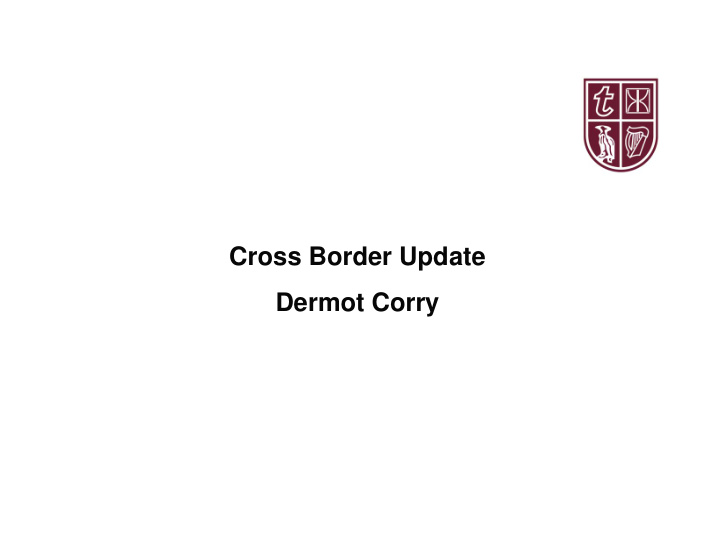



Cross Border Update Dermot Corry
Dealing/Transaction Accounts • Dealing/transaction accounts for Portfolio Bonds – Policies usually include a range of unit holdings and deposit accounts – There is often a transaction or dealing account – Premiums/dividends/asset sales are paid into this account – Charges/Asset purchases/Claim payments made from the account – Policy has been to pay interest on any balance in this account – Interest rate is normally variable – with some relationship to base rates – Treasury management of the balance managed by the life company – Who has the counterparty risk? – AILO commissioned a legal opinion which suggested that the company has the counterparty risk (obviously depends on company rules) – Should there be solvency margin? – Consider as part of technical provisions and subject to asset admissibility rules
Localisation 1994 Regulations - Annex VII, Article 4(1)(a): “an undertaking with its head office in the State shall establish and maintain assets in the Member States equal to not less than 60% of its combined linked and non-linked liabilities . . ” • So 60% of assets must be in the EU • Not normally a problem • Difficulty this year for Portfolio Bond companies – Substantial amount of assets on deposit – typically in bank accounts in the Isle of Man – Generally hold a range of different funds. Many of these funds are registered outside the EU – Switch to cash this year pushing some companies towards 60%
Italian Index Linked rules • Index linked (or tracker bond) business is a large part of the Italian market • Counterparty risk was generally passed to an international bank • This caused problems when Lehmann collapsed • ISVAP (Italian regulator) seeking to change rules (consultation paper 30/2008): – Insurance company must guarantee the product – cannot rely on solvency of the bond issuer – Equity payoff must be linked to movement in the index value – implication for use of an option to provider the guarantee – Rules on spread of assets for Italian companies – Italian companies allowed to have 1% solvency margin if they match closely
Variable Annuities • Extreme levels of volatility in equity markets and interest rates • Leads to convexity losses • Basis risk losses – tracking error between fund and index used for hedging • Pricing changes – falling interest rates and increased volatility • Some changes to products to de-risk • Withdrawals from market – Swiss Re, Hartford • German government deferred plan to allow VA by German insurers • More limited availability of reinsurance • Lessons to be applied to new products • Still new entrants to the market
Other Issues • Greater focus on lack of an insurance guarantee scheme in Ireland • Counterparty risk has become a greater issue • Return of premium on death guarantees being seen to be valuable • Increase in Minimum Solvency Margin to €3.5m at end 2009 • Closure to new business of three companies
Recommend
More recommend